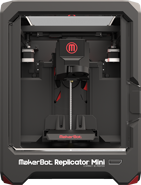The Latest in the World of Cancer Research
- A leading cancer expert, Professor Mark Lawler, from Queen’s University in Belfast recently published a paper where he advocates for the sharing of genetic information of millions of cancer patients in hopes of improving preventive methods and overall care. The paper was published in Nature Medicine.
- A recent study published in the Journal of Nuclear Medicine demonstrates that Ga-68 DOTATATE PET/CT scans are better suited than the current imaging standard for detecting neuroendocrine tumors and can significantly affect treatment management.
- Researchers at the University of California Davis Health System have identified more than 43 genes associated with risk between autism and cancer, suggesting that common mechanisms underlying the functions of some of these genes could pave the way for the development of therapies for both conditions. The study results were published in Trends in Genetics.
- After years of debate about the health risks of electronic cigarettes, the Food and Drug Administration (FDA) recently assumed regulatory authority over e-cigarettes. In contrast to proposed FDA regulations, the Royal College of Physicians in the UK in a report acknowledges the need for proportionate regulation of e-cigarettes, but suggests that regulation should not be allowed significantly to inhibit the development and use of harm-reduction products by smokers. “This is two countries taking pretty much diametrically opposed positions,” said Kenneth E. Warner, a professor of public health at the University of Michigan School of Public Health, in a recent New York Times article.
